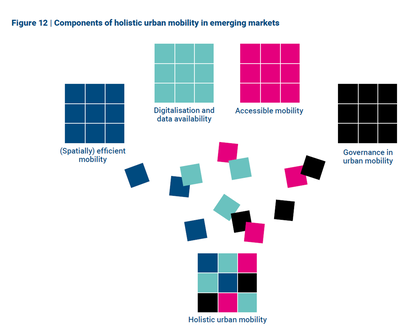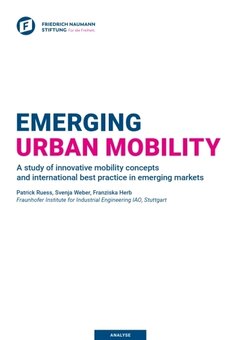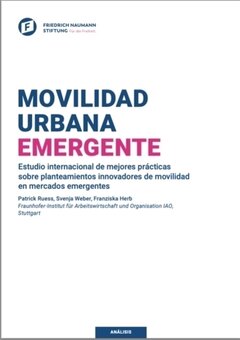Publication
In the fast lane: The future of mobility in emerging markets
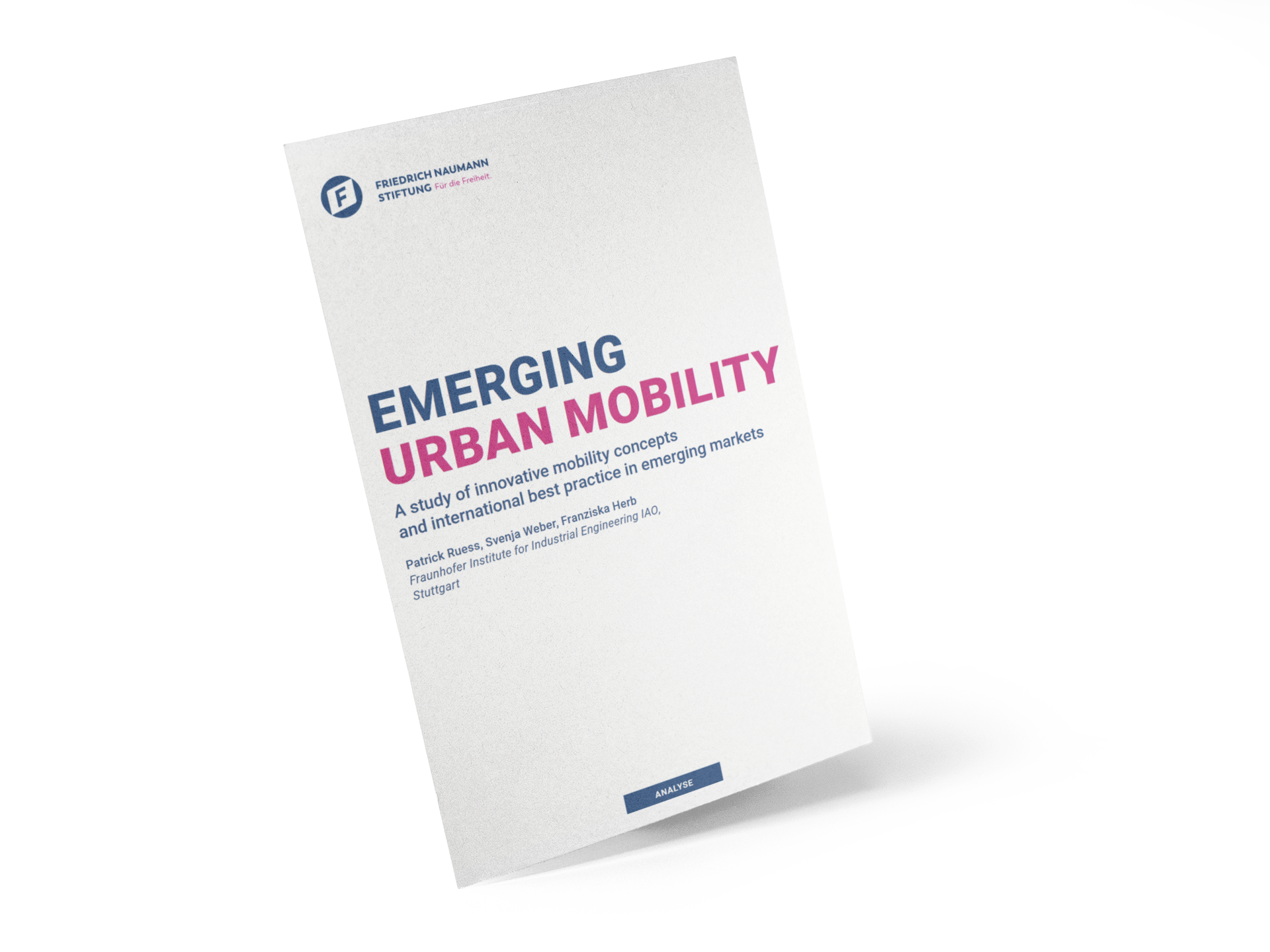
Our world is becoming more and more urban. Today, 55 percent of humanity already lives in cities, and by 2050 this proportion is expected to rise to more than two thirds. While the process of urbanization has largely been completed in industrialized nations, it continues to gain momentum in many emerging and developing countries and poses major challenges for the metropolises there. This is particularly true for the transport infrastructure, which is overloaded in many places. The consequences are devastating: traffic jams, bad air and many traffic accidents.
For industrialized nations, problems and possible solutions in the area of urban mobility have been well researched. However, there is only an incomplete picture for emerging markets. With the study “Emerging Urban Mobility” by Fraunhofer IAO, the Friedrich Naumann Foundation for Freedom aims to make a contribution to closing this gap. The study includes representative user surveys in three selected focus countries (Indonesia, Morocco and Mexico) as well as a selection of mobility solutions that show which measures have proven to be effective or which are particularly hopeful.
The main results of the survey
Three main findings emerge from the representative survey of the urban population in Indonesia, Morocco and Mexico:
- In all three countries, the urban population will continue to attach great importance to cars in the future. In Morocco and Mexico, the car is seen as a means of transport with the highest future potential; in Indonesia, the car comes in second place in the survey.
- In all three countries, people look at the future with great confidence and the majority assume that the mobility situation in the future will meet their expectations (Indonesia 79%, Morocco 62%, Mexico 55%).
- In all three countries, urban mobility solutions should first and foremost be “safe”. This makes it clear that the lack of road safety and the high risk of accidents in the three focus countries are unanimously perceived as the core problem of urban mobility.
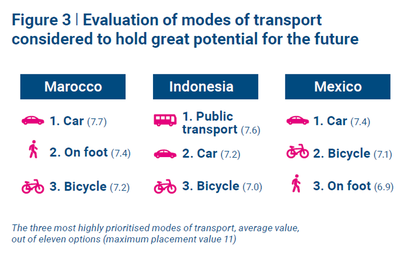
International best practice solutions
The best practice solutions make it clear how diverse the urban mobility challenges are in emerging countries but also show the great willingness to address the problems by innovation. Of course, solutions cannot be transferred one-to-one between industrialized nations and emerging countries. The challenges and requirements are too different for that. Nevertheless, there is a lot to learn from each other: the world's largest bus rapid transit system, with a length of 200 kilometers, has been established in Jakarta. In Caracas, a cable car project was successfully integrated into an already densely populated area. To solve its urban traffic problems, Malaysia is relying on anonymized traffic data to analyze traffic peaks and travel times. Johannisburg uses artificial intelligence to recognize traffic patterns and control traffic more intelligently. For several years now, Mexico City has placed particular emphasis on mobility planning that is intended to a better protection of women.
Conclusion
From the perspective of the Friedrich Naumann Foundation for Freedom, the conclusion of the study is clear: advancing urbanization poses particular challenges for urban mobility in emerging countries. The representative survey in Indonesia, Morocco and Mexico impressively shows that people remain confident despite all the problems. It is also clear that people do not see a future without their car. The results show that there could be a significant demand for alternative fuels in these countries on the path to climate-friendly mobility. On the other hand, with regard to climate protection goals, it is clear that, especially in cities, ways must be found to combine climate protection and individual transport and to use effective mass transport systems as a real alternative. In order to solve the traffic problems in cities around the world, a fair amount of willingness to innovate is required. The best practice examples in the study make it clear that a wide range of innovations are already being used in emerging markets. There is therefore a need for an exchange on equal terms between industrialized nations and emerging countries so that cities around the world can learn from each other and get their mobility problems under control.
